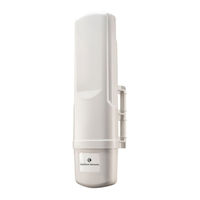
Cambium Networks PMP 450 Manuals
Manuals and User Guides for Cambium Networks PMP 450. We have 3 Cambium Networks PMP 450 manuals available for free PDF download: Planning Manual, Configuration And User's Manual, User Manual
Cambium Networks PMP 450 Planning Manual (223 pages)
wireless access network platform
Brand: Cambium Networks
|
Category: Wireless Access Point
|
Size: 2 MB
Table of Contents
-
-
-
-
-
Mimo56
-
Encryption56
-
-
-
-
-
-
Standards117
-
-
-
DNS Client130
-
-
Port Lockdown144
-
Isolating Sms144
-
-
-
Definitions157
-
Grant of License157
-
Confidentiality159
-
Transfer159
-
Updates159
-
Maintenance160
-
Disclaimer160
-
U.S. Government161
-
Term of License161
-
Governing Law161
-
Assignment161
-
Entire Agreement162
-
-
-
-
Type Approvals183
-
-
Notifications208
Advertisement
Cambium Networks PMP 450 User Manual (172 pages)
Cambium PMP Synchronization Solutions
Brand: Cambium Networks
|
Category: Wireless Access Point
|
Size: 5 MB
Table of Contents
-
-
-
-
-
Log in38
-
-
-
-
-
Power69
-
CMM Planning74
-
Cables83
-
-
Log in93
-
User Update94
-
Add User95
-
Delete User96
-
Configuring VLAN102
-
-
Avoiding Hazards111
-
Cables112
-
Power Faults131
-
-
-
-
Legal Notices166
Cambium Networks PMP 450 Configuration And User's Manual (196 pages)
outdoor access point
Brand: Cambium Networks
|
Category: Wireless Access Point
|
Size: 3 MB
Table of Contents
-
-
-
Definitions24
-
Transfer27
-
Updates27
-
Maintenance27
-
Disclaimer28
-
Assignment29
-
-
-
Advertisement


